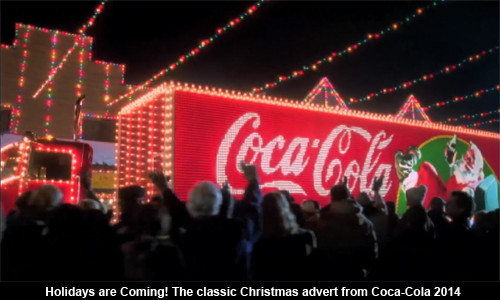As consumers become better informed about advertising practices, brands have begun to use more subtle forms of advertising to engage and connect with consumers.
In the weeks leading up to Christmas, retailers have utilised a less aggressive tactic, increasing brand awareness through the use of nostalgic storytelling. The challenge here has been to integrate brands into a recogniseable storyline that tugs at the heartstrings.
However, the interaction between storytelling and product placement in a campaign can also create risks; a story can trigger undesirable feelings among consumers or the point of the ad can be missed entirely. Although not all stories are inherently touching, engaging human emotion is a guaranteed way to connect with consumers and get results.
Here are four storytelling patterns to watch out for over Christmas:
1. Narrative First
When the narrative is the focal point of an ad, the brand is used merely as a sponsor or narrator. In fact, the brand may only appear at the end of the scene – a bold move indeed. The risk involved with this method is that the audience may not directly engage with the brand.
A recent example of a narrative first ad is “Monty the Penguin” by John Lewis. The campaign tells the story of a boy whose Christmas wish is to receive a female mate for his toy penguin, who he imagines to be alive. The John Lewis brand is not introduced until after the story runs in full, just 10 seconds before the end of the ad. The story touched the hearts of consumers resulting in over 20 million views on YouTube – smooth viral success without even mentioning what John Lewis sells. Even the cuddly toy penguin that features in the advert sold out within twenty-four hours, proving its popularity.
The ad was a success because it built customer loyalty by sharing a story that reflects the company’s values and mission statement, while keeping the target audience in mind. John Lewis ensured that the story would resonate with human nature and, ultimately, relate back to the brand.
2. Brand Name Presence
In this year’s Coca Cola Christmas campaign they make use of storytelling, alongside the Coke logo and substantial product placement. The ad pairs the slogan “Make someone happy” with continual brand presence, leading the audience through various scenarios in which people make small kind gestures at Christmas time. In each scene the product is present: Santa drinking a Coke at work, the boy on the platform who pulls out a bottle to impress a girl, and so on.
The effect is created by tying an emotional story with calculated product placements, and the strategy works. Guy Duncan, Global Creative Director at Coca-Cola said, “A great story is one that you tell someone, but also one that’s designed to be told to other people too. When we do that, it spreads, and we add value to our brand.”
3. The Brand Reveal
In this storytelling pattern, the brand remains invisible, appearing suddenly at the very end of the ad. An example is the recent Lidl campaign “The Little Present” where the people of Hertfordshire are invited for Christmas dinner by a supermarket retailer and have to guess who has provided the food. At the end of the scene the logo is shown on an envelope opened by the guests.
With this method the brand or the product is not directly linked to the story in a straightforward way. This form of storytelling is widely used because it ensures brand recall by forcing the audience to form an association between the brand and the narrative. This type of brand reveal is especially effective as it also provides a review of Lidl’s products, and recommendations are still seen as the most effective form of advertising.
4. Brand Feature
In the final storytelling pattern, the brand is a visible, permanent fixture in the ad, working as a narrative element. The story is built entirely around the brand with consistent product placement. The campaign “Build Your Lego Christmas” exemplifies this method. It features a boy who breaks the Christmas decoration that sits on his tree. Overnight, his sister creates a Christmas star out of Lego bricks, which she surprises him with. The Lego logo is displayed permanently throughout. It doesn’t get more obvious than this, but boy is it effective.
Whether the brand is featured heavily or only for a moment, story-driven ads interact with the audience on a personal level, playing off nostalgia. Storytelling is already an integral aspect of the human experience, and brands that capitalise on it have had great success. A good story can evoke strong emotions, but a great story will lead consumers to develop a personal connection with a brand.






